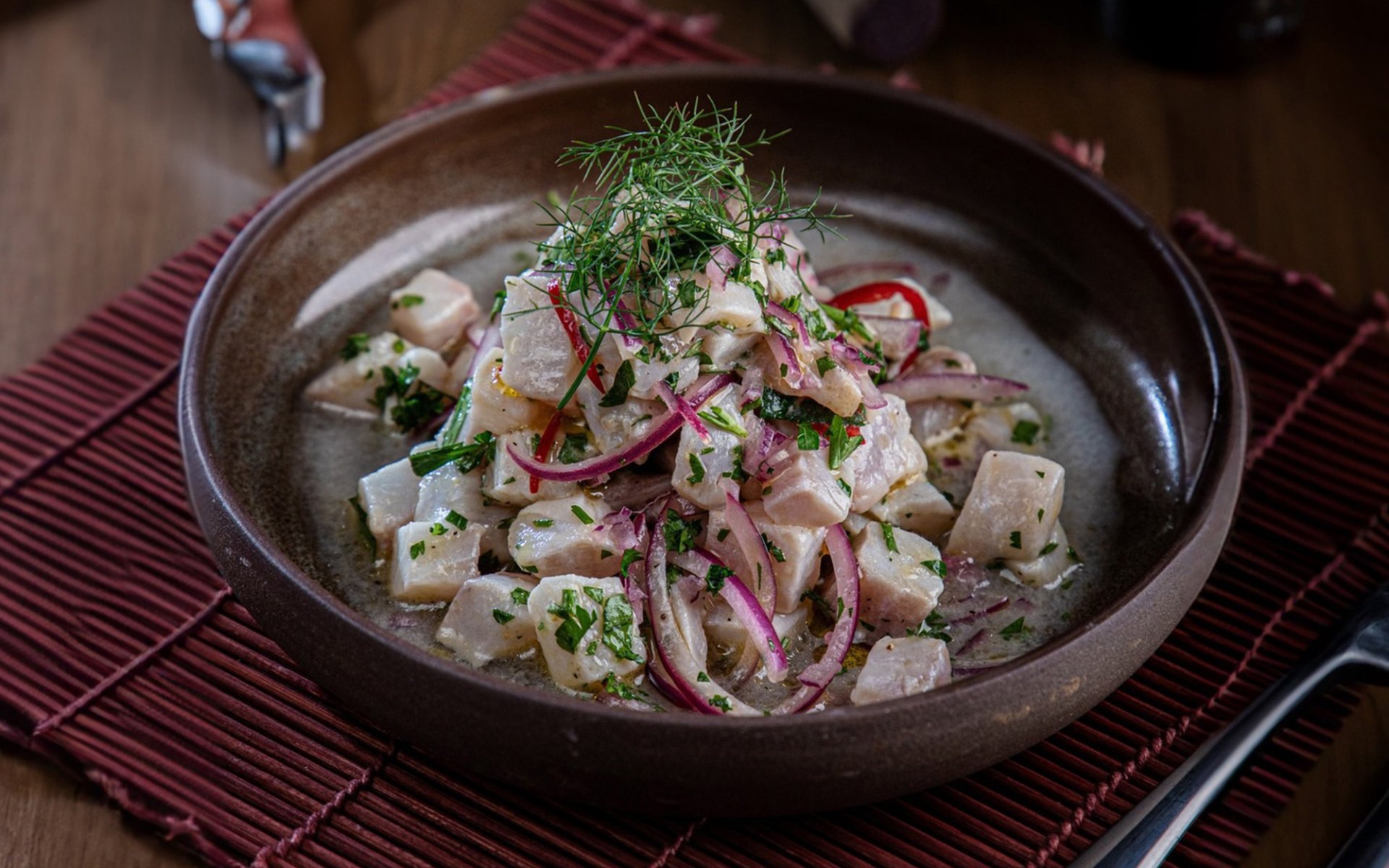Ceviche

Peru is a country rich in diverse culinary traditions. Historically, it was home to one of the greatest ancient civilizations in the Americas. Furthermore, people from Spain and Japan migrated and settled in Peru. As a result, most Peruvian cuisine is a hybrid, showcasing cultural exchanges from both Spanish and Japanese influences. The dish Ceviche is a prime example of this fusion.
The Origin of Ceviche: From Tumbo to Modernity
Ceviche originated on the northern Pacific coast of Peru approximately 2,000 years ago. Indigenous Peruvians in that era used a marinade called Tumbo, made from a local fruit similar to passion fruit, to marinate fish along with salt and Aji Amarillo (Peruvian orange chili). However, the fish in ceviche at that time was slightly cooked, unlike the raw fish preparation we know today.
Later, in the 16th century, Peruvian cuisine underwent a significant transformation when Christopher Columbus arrived. He introduced lemons, onions, garlic, and cilantro, which subsequently became essential ingredients in the ceviche we recognize today.
Japanese Influence: The Birth of Nikkei Food
In the late 19th century, Japanese immigrants began to arrive in Peru, bringing their culinary culture with them. Japanese chefs were highly skilled in preparing raw fish. They later adapted Peruvian ceviche by incorporating raw fish. While originally only white fish was used, Japanese chefs now utilize tuna, mackerel, and octopus to create more innovative ceviche variations, leading to a culinary tradition known as Nikkei food, a fusion of Japanese and Peruvian cuisines.
Given that both Peru and Japan share coastal geographies, a significant portion of their local cuisine is seafood-based. Therefore, the merging of these two cultures has harmonized exceptionally well.
Global Popularity and Versatility
Over time, ceviche gained widespread popularity throughout Latin America. Each region added its unique touch, resulting in regional variations of ceviche. For instance, in Mexico, ceviche is often seasoned with tomatoes, avocado, chili peppers, and cilantro, giving it a spicier and tangier flavor. In Ecuador, ceviche is frequently served with popcorn and fried potatoes, adding an interesting textural component.
Over the years, ceviche has gained widespread popularity beyond Latin America, appealing to food enthusiasts worldwide. Its refreshing, light taste and versatility with various ingredients have led restaurants globally to include ceviche on their menus.
Contemporary culinary trends have further elevated ceviche's recognition. Many chefs acknowledge ceviche as a versatile dish that can be adapted to various dietary preferences, from vegetarian versions using tofu or mushrooms instead of fish to fusion dishes incorporating Asian and Mediterranean influences.
Ceviche is a dish with a rich history, having evolved through various cultures. From its humble beginnings in ancient Peru to its modern, internationally acclaimed form, ceviche has now become a dish that has made a name for itself in the global culinary scene with its refreshing taste and vibrant colors.


